Through Working Lands for Wildlife (WLFW), USDA uses a win-win approach to systematically target conservation efforts to improve agricultural and forest productivity which enhance wildlife habitat on working landscapes.
Through Working Lands for Wildlife (WLFW), NRCS works with partners and private landowners to focus voluntary conservation on working landscapes. NRCS provides technical and financial assistance to agricultural producers, helping them plan and implement conservation practices that benefit target species and priority landscapes.
NRCS has a broad delivery system to put conservation on the ground at the local level, across the entire country. With nearly two thirds of all species federally listed as threatened or endangered with populations on private lands, the ability to work with private landowners and target our conservation efforts can have a tremendous impact.
This partnership uses innovative approaches with farmers, ranchers and forest landowners to restore and protect priority habitat areas for selected wildlife species.
Target Species

Golden Winged-Warbler
The Golden winged-warbler is a vibrantly-colored migratory songbird that breeds and nests in New Jersey and other parts of the United States and winters in Central and South America.
The Golden-winged Warbler has undergone a significant population declines in the Appalachian region. Golden-winged warblers (GWWA) and many other species depend upon shrubby, early successional habitats including alder swamps, areas harvested for timber, and utility rights-of way.
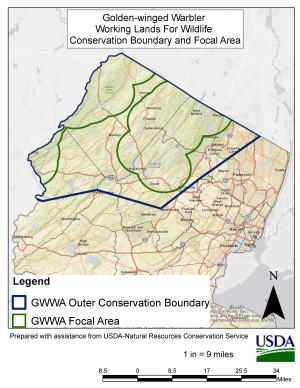
The Appalachian region offers a tremendous opportunity to improve habitat for Golden-winged Warbler and other neotropical migratory birds. The vast forested lands, grasslands and forb-rich areas provide structurally diverse vegetation for breeding and foraging, and offer the greatest opportunity to combat declines in the Golden-winged Warbler.
Working Lands for Wildlife will assist private land owners in creating and maintaining the habitat necessary to sustain breeding populations within and adjacent to their current range.
Core Conservation Practices
- Restoration & Management of Rare & Declining Habitats (643)
- Upland Wildlife Habitat Management (645)
- Early Successional Habitat Development/Management (647)
Supporting Conservation Practices
- Brush Management (314)
- Herbaceous Weed Control (315)
- Deep Tillage (324)
- Conservation Cover (327)
- Prescribed Burning (338)
- Critical Area Planting (342)
- Fence (382)
- Field Borders (386)
- Access Control (472)
- Mulching (484)
- Tree Shrub Site preparation (490)
- Forage Harvest management (511)
- Forage & Biomass Planting (512)
- Prescribed Grazing (528)
- Tree/Shrub Establishment (612)
- Forest Harvest Trails & Landings (655)
- Forest Stand Improvement (666)
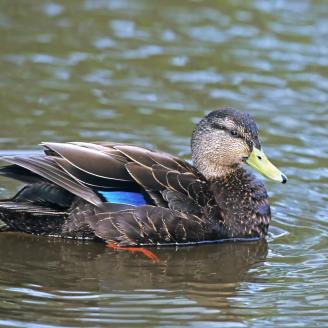
American Black Duck
The American black duck’s (Anas rubripes) stronghold is in the coastal estuaries and tidal waters of the mid-Atlantic region, from New York to Virginia. Populations declined by more than 50 percent between the 1950s and 1980s due to loss of coastal habitats. NRCS is now working with local, state and federal partners to reverse this decline by reducing threats to critical habitat. NRCS is now working with local, state and federal partners to reverse this decline by reducing threats to critical habitat.
NRCS and the Black Duck
The black duck is a state-identified target species of the Working Lands for Wildlife (WLFW) partnership, a collaborative approach to conserve habitat on working lands.
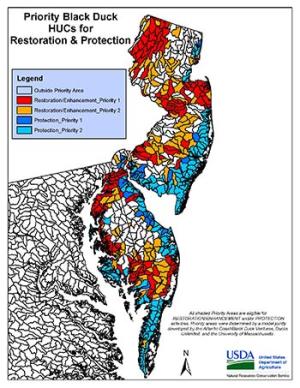
Eligible agricultural producers in Delaware, Maryland, Virginia and New Jersey can receive help with implementing a variety of conservation practices to restore black duck wintering habitat in the mid-Atlantic region’s Delaware Bay and Chesapeake Bay watersheds.
Areas of eligibility are depicted on the map to the left.
Black duck habitat will be restored and enhanced through installation of conservation practices and protection of habitat through easements. Participating states will focus on developing habitat and controlling invasive species. Available practices aim to protect, restore and create emergent wetland and forested wetland habitat, manage invasive plants, and combat habitat loss because of development, pollution and wetland conversion.
Available Practices
- Brush Management
- Conservation Cover
- Critical Area Planting
- Herbaceous Weed Control
- Mulching
- Prescribed Burning
- Restoration and Management of Rare and Declining Habitats
- Riparian Forested Buffer
- Riparian Herbaceous Cover
- Shallow Water Development/Management
- Structure for Water Control
- Tree/ Shrub Establishment
- Upland Wildlife Habitat Management
- Wetland Enhancement
- Wetland Restoration
- Wetland Wildlife Habitat Management
For more information, contact your local service center.
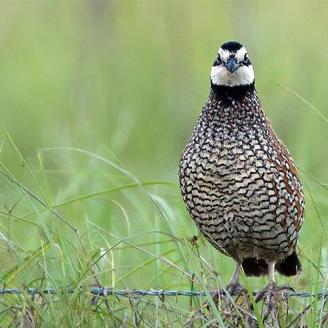
Northern Bobwhite
The northern bobwhite, commonly referred to as bobwhite quail, is an iconic and highly valued species that was once common throughout eastern North America. With the decline of suitable habitat, populations have decreased by more than 85% since the 1960’s. Changes in agricultural practices, changes in land use, and lack of forest management have led to fragmentation of high quality habitat and loss of quality early successional habitat.
NRCS and the Northern Bobwhite
The northern bobwhite quail is a state- identified target species of the Working Lands for Wildlife (WLFW) partnership, a collaborative approach to conserve habitat on working lands. NRCS will provide technical and financial assistance through a new WLFW project launched in fiscal year 2017.
Research has shown that closed canopy and/or unburned pine stands provide poor habitat and may also serve as ecological sinks for northern bobwhite and other grassland species. When applied appropriately, forest thinning and frequent prescribed fire mimic the ecosystem processes that once occurred naturally across landscapes to create and maintain savanna habitats. Without thinning, tree canopies close and shade out ground cover. Without frequent prescribed fire, grasses and forbs are replaced by woody plants and forest litter. Appropriately timed thinning and burns reduce hazardous fuels while improving stand quality and overall forest health.
Eligible landowners can receive help to implement a variety of conservation practices to restore northern bobwhite quail habitat.
Available Practices
- Forest Stand Improvement
- Early Successional Habitat Development/ Management
- Upland Wildlife Habitat Management
- Brush Management
- Conservation Cover
- Firebreak
- Fuel Break
- Prescribed Burning
- Tree/Shrub Site Preparation
- Tree/Shrub Planting
- Tree/Shrub Pruning
- Woody Residue Treatment
Focal Area
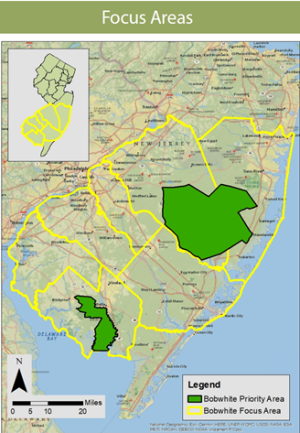
Landowners in Ocean, Burlington, Camden, Gloucester, Salem, Cumberland and Atlantic Counties are eligible to apply.
Outcomes and Impacts
As more landowners use conservation practices to restore habitat for northern bobwhite in Pine Savanna habitat, forest health will improve.
Improved habitat for the northern bobwhite will also benefit turkey, pine snake, timber rattlesnake, pollinators and many species of songbirds.
Bog Turtle
The continent's smallest turtle, the bog turtle, inhabits wetlands of the Mid-Atlantic. They measure only about four inches and prefers to live in open canopy, unpolluted, herbaceous sedge meadows and fens bordered by wooded areas.
The greatest threats to bog turtles include habitat degradation and fragmentation from land conversion, habitat succession because of invasive exotic and native plants, and illegal trade and collecting. Changes in land use or alterations in water flow reduce a wetland’s ability to function. Wetland habitats that have been drained and filled for development, agriculture and roads have severely fragmented the remaining habitat, isolating existing bog turtle populations. In the past 30 years, the turtle has disappeared from more than 50 percent of the wetlands it once inhabited. The U.S. Fish and Wildlife Service listed the turtle as threatened in 1997.
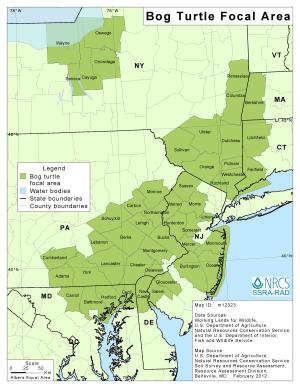
Most of the remaining bog turtle habitat is privately owned. Many of the wetlands are located in agricultural areas where livestock are frequently grazed. NRCS works with landowners to use prescribed grazing, which enhances habitat by slowing natural plant succession and minimizing the encroachment of invasive native and exotic plant species.
Core Conservation Practices
- Restoration & Management of Rare & Declining Habitats (643)
- Wetland Wildlife Habitat Management (644)
- Upland Wildlife Habitat Management (645)
- Early Successional Habitat Development/Management (647)
Supporting Conservation Practices
- Brush Management (314)
- Herbaceous Weed Control (315)
- Conservation Cover (327)
- Prescribed Burning (338)
- Fence (382)
- Riparian Herbaceous Cover (390)
- Riparian Forest Buffer (391)
- Filter Strip (393)
- Stream Habitat Improvement (395)
- Grade Stabilization (410)
- Access Control (472)
- Prescribed Grazing (528)
- Stream Crossing (578)
- Streambank and Shoreline Protection (580)
- Structure for Water Control (587)
- Watering Facility (614)
- Wetland Restoration (657)
- Wetland Enhancement (659)
Ready to get started?
Contact your local service center to start your application.
How to Get Assistance
Do you farm or ranch and want to make improvements to the land that you own or lease?
Natural Resources Conservation Service offers technical and financial assistance to help farmers, ranchers and forest landowners.

To get started with NRCS, we recommend you stop by your local NRCS field office. We’ll discuss your vision for your land.
NRCS provides landowners with free technical assistance, or advice, for their land. Common technical assistance includes: resource assessment, practice design and resource monitoring. Your conservation planner will help you determine if financial assistance is right for you.
We’ll walk you through the application process. To get started on applying for financial assistance, we’ll work with you:
- To fill out an AD 1026, which ensures a conservation plan is in place before lands with highly erodible soils are farmed. It also ensures that identified wetland areas are protected.
- To meet other eligibility certifications.
Once complete, we’ll work with you on the application, or CPA 1200.
Applications for most programs are accepted on a continuous basis, but they’re considered for funding in different ranking periods. Be sure to ask your local NRCS district conservationist about the deadline for the ranking period to ensure you turn in your application in time.
As part of the application process, we’ll check to see if you are eligible. To do this, you’ll need to bring:
- An official tax ID (Social Security number or an employer ID)
- A property deed or lease agreement to show you have control of the property; and
- A farm number.
If you don’t have a farm number, you can get one from USDA’s Farm Service Agency. Typically, the local FSA office is located in the same building as the local NRCS office. You only need a farm number if you’re interested in financial assistance.
NRCS will take a look at the applications and rank them according to local resource concerns, the amount of conservation benefits the work will provide and the needs of applicants. View Application Ranking Dates by State.
If you’re selected, you can choose whether to sign the contract for the work to be done.
Once you sign the contract, you’ll be provided standards and specifications for completing the practice or practices, and then you will have a specified amount of time to implement. Once the work is implemented and inspected, you’ll be paid the rate of compensation for the work if it meets NRCS standards and specifications.

